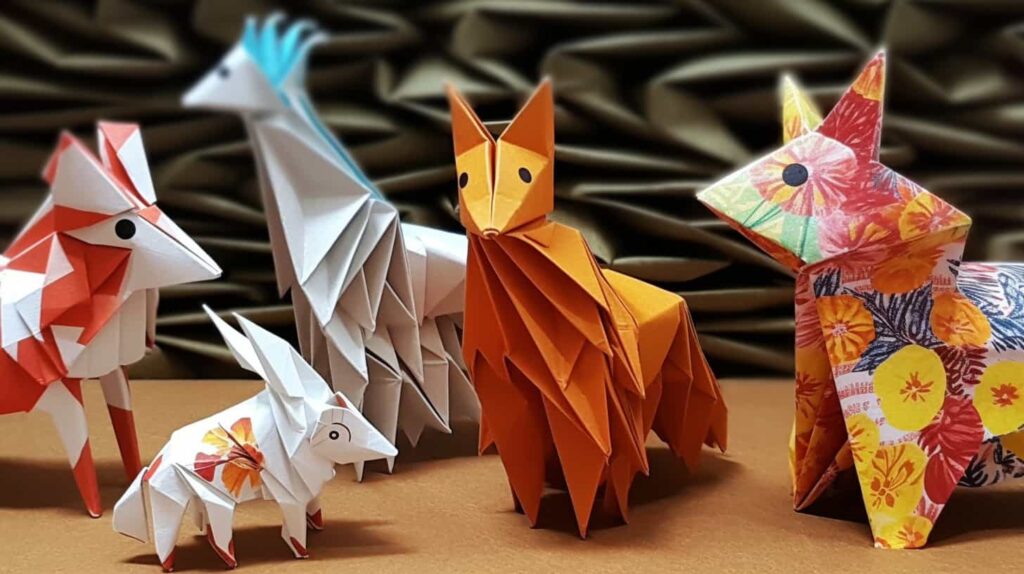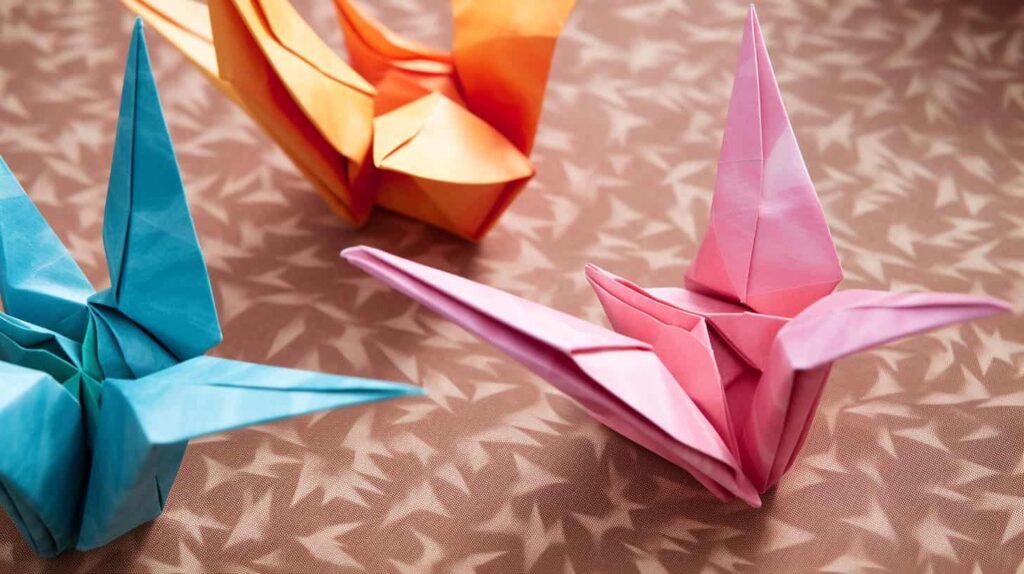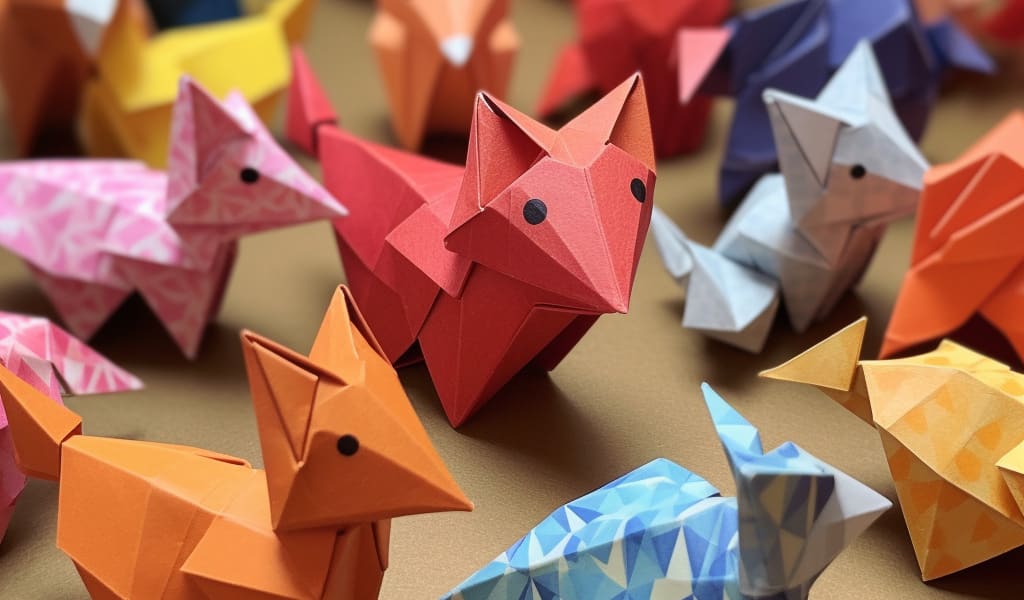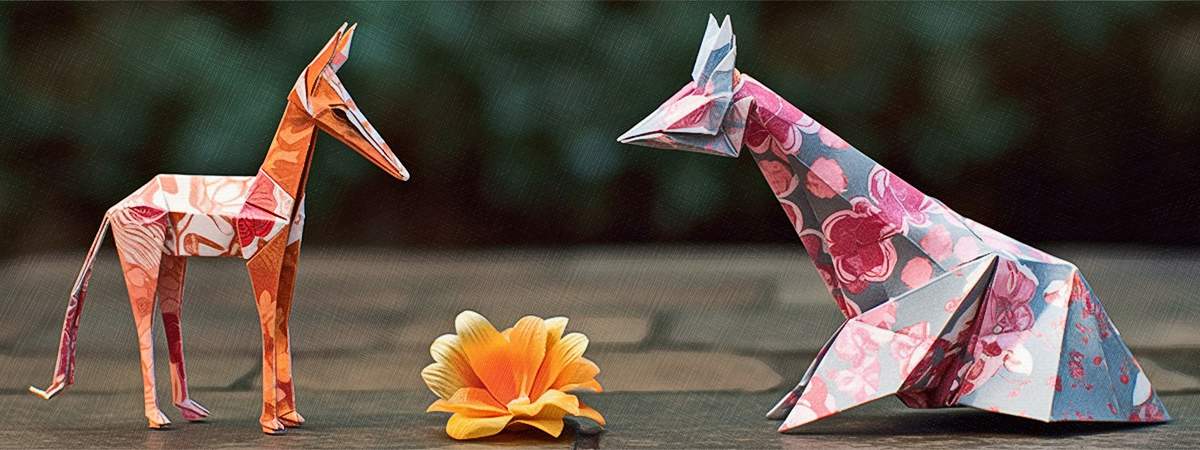Origami, the ancient Japanese art of paper folding, is a beloved hobby and creative outlet for people worldwide. In this ultimate guide to origami paper sizes, we’ll help you navigate through the various dimensions, types of paper, and other factors to choose just the right size for your next project.
From simple models to intricate masterpieces, selecting the appropriate paper size can make all the difference in bringing your vision to life.
Key Takeaways
- Understanding aspect ratio and standard paper sizes is crucial in choosing the right origami paper for your project.
- Japanese and American paper sizes have different aspect ratios and it’s important to choose the right type of paper accordingly to ensure optimal results for your project.
- Popular origami paper sizes such as 15×15 cm (6”x6”) or 20×20 cm (8”x8”) are suitable for simple or intermediate models, while larger sizes like 30×30 cm (12” x12”) or 50×50 cm (20”x20”)are ideal for complex or large designs.
- Consider factors such as complexity, final size, design of model, texture, color and weight of the paper when selecting origami papers that work best for you.
Understanding Origami Paper Sizes
In this section, we’ll cover everything you need to know about origami paper sizes, including the importance of aspect ratio and standard paper sizes, differences between American and Japanese paper sizes, and the types of origami paper available.
Importance Of Aspect Ratio And Standard Paper Sizes
Understanding the aspect ratio and standard paper sizes is crucial when choosing the right origami paper for your project. The aspect ratio refers to the proportion between the width and length of a sheet of paper, which plays a significant role in determining how precise and aesthetically pleasing your final piece will be.
Standard paper sizes, such as A4 (8.3”x11.7”) or letter-size (8.5”x11”), provide you with uniformity across different projects and make it easier for you to fold consistently proportioned models each time.
Using standardized dimensions also saves time on cutting custom-sized paper pieces while ensuring compatibility with most origami diagrams and instructions available online or in books.
Differences Between American And Japanese Paper Sizes
Japanese and American paper sizes are two different systems that can cause confusion for origami enthusiasts. Japanese paper sizes, such as A4 or B5, are based on metric measurements while American papers use imperial measurements like letter or legal size.
The aspect ratios of these papers are also different, with the Japanese system having a smaller ratio compared to the American system. For origami projects, using the wrong paper size can result in undesirable outcomes such as unfinished edges or awkward proportions.
Types Of Origami Paper

Origami paper comes in many types, each with its own unique qualities to enhance your projects. Here are some of the most popular types:
- Washi: This traditional Japanese paper is thin and strong, making it perfect for intricate and complex designs.
- Chiyogami: Also known as Yuzen paper, this colorful patterned paper adds a touch of elegance to any project.
- Tant: A high-quality origami paper that is easy to fold and has a smooth texture, making it ideal for beginner to intermediate models.
- Kraft: This brown-colored paper has a rough texture and provides a natural look to your designs.
- Foil: For a shiny and reflective finish, foil origami paper is the way to go.
- Duo-colored: These papers have different hues on either side, allowing for contrasting or complementary colors in your designs.
- Metallic: Similar to foil, metallic origami papers are glossy and come in various shades of metallic colors, such as gold and silver.
- Lokta: A handmade Nepalese paper made from the bark of the Lokta plant, this type of origami paper is strong and durable with a unique texture and earthy color palette.
No matter which types you choose, make sure it suits your project’s needs based on factors such as complexity, desired size, color choice, weight/thickness preference, and personal experience level.
Popular Origami Paper Sizes And Their Uses
The 15×15 cm (6”x6”) size is best for simple models, while the 20×20 cm (8”x8”) paper is suitable for intermediate and more complex models.
15×15 Cm (6”x6”) For Simple Models
For simple origami models, such as the traditional crane or frog, a 15×15 cm (6”x6”) paper size is recommended. This size is perfect for beginners and allows for easy manipulation and folding.
The smaller size also makes it easier to handle and control the paper during intricate folds and creases. Additionally, this size of paper can be easily found at craft stores or online retailers in various colors and patterns.
20×20 Cm (8”x8”) For Intermediate Models
The 20×20 cm (8”x8”) paper size is ideal for those who have experience in origami and are looking to tackle more challenging models. This intermediate-sized paper works well with intricate designs that require precise folding techniques, making it perfect for creating animals, flowers, or geometric shapes.
Its smaller size allows for greater detail on the finished model while still being manageable for most hands. The weight of the paper can also affect the final result; a heavier weight may be better suited to complex models with many layers, while a lighter weight allows for more delicate folds and curves.
30×30 Cm (12”x12”) For Complex Models
For those looking to tackle more intricate designs, 30×30 cm (12”x12”) paper is the ideal choice. This paper size allows for detailed folds and creases without compromising on the final size of the model.
It’s perfect for complex origami projects that require precision cutting, such as animals, flowers, and geometric shapes. The weight of this paper can vary depending on personal preference but generally falls within the range of 60-100 gsm.
The larger surface area also means you have more space to work with patterns and designs, making it easier to create intricate details in your models. Additionally, larger sized sheets are helpful when working on modular origami projects where you need multiple squares of a fixed size to complete one design.
50×50 Cm (20”x20”) For Large And Detailed Models
If you’re planning on making an origami model that’s large and intricate, 50×50 cm (20”x20”) paper is the perfect size to use. This larger paper allows for more detail and complexity, which can take your project to the next level.
A great example of a model that benefits from this size is the Japanese crane – its flapping wings look much more realistic when made with a larger sheet of paper. Additionally, using a larger sheet means you can make bigger folds without worrying about running out of space or accidentally creasing in the wrong place.
Factors To Consider When Choosing Origami Paper Sizes

Consider the complexity, final size, and design of your origami model as well as the texture, color, and weight of the paper before making a decision.
Complexity, Final Size, And Design Of The Model
The size of paper used for origami projects depends on the complexity, final size, and design of the model. For intricate designs or models with small details, it’s recommended to use a smaller paper size to ensure precision in folding.
On the other hand, larger models require more space and detail, so a larger paper size is necessary.
It’s essential to consider these factors when selecting your origami paper because using an inappropriate size can lead to frustration and disappointment with the end result.
Texture, Color, And Weight Of The Paper
The texture, color, and weight of the origami paper are important factors to consider when choosing the right size for your project. The texture of the paper can affect how easy it is to fold and manipulate, with smoother textures being easier to work with for beginners.
Color choice can also impact the final look of your model, with solid colors highlighting folds while patterned papers showcase intricate designs.
It’s essential to experiment with different textures, colors, and weights until you find the one that works best for you and your project. Some popular types include crisp and smooth kami paper or soft washi paper made from natural fibers like mulberry or rice.
When selecting a supplier, be sure they provide high-quality options that are durable enough to hold up during folding without tearing or creasing easily.
Personal Preference And Experience
Choosing the right origami paper size is not just about the dimensions and structure of your project. Personal preference and experience play a vital role in making the right choice.
Experienced origami artists may have their preferences when it comes to paper texture, weight, and color based on their past successes or failures with certain types of projects.
For beginners, experimenting with different paper sizes can help them discover what works best for them. Some people prefer thin papers that make folds crisper, while others may like heavier papers that give more body to models.
For example, some origami enthusiasts might prefer textured papers that add depth to their models or metallic finishes that enhance intricate details in complex designs. Others might prefer natural fibers such as mulberry bark or rice straw, which land an organic feel to their work.
Tips For Working With Different Origami Paper Sizes

Adjusting folds and creases is key when working with different origami paper sizes. In this section, we’ll also go over using multiple sheets for larger designs, understanding the effects of paper weight and investing in high-quality origami paper for best results.
Adjusting Folds And Creases
To get the most out of your origami project, it is important to adjust folds and creases properly. Adjusting these folds can make a big difference in the final appearance of your model and its overall stability.
Be sure to take note of where you need to fold, as well as how deep each fold should be, so that you achieve the desired result.
Remember that different paper sizes will require different levels of pressure when making folds or creases. As such, it is important to practice on scrap paper before starting on your final piece.
By paying attention to these details during the folding process, you’ll create a stunning finished product that truly showcases your artistic abilities.
Using Multiple Sheets For Larger Designs
When working on larger and more complex origami models, it may be necessary to use multiple sheets of paper to achieve the desired size and level of detail. Here are some tips for using multiple sheets in your origami projects:
- Use a consistent weight and texture for all sheets to ensure uniformity in your project.
- Make sure each sheet is folded with precision and accuracy so that they align properly when assembled.
- Use glue or tape sparingly to hold the sheets together, as excess adhesive may interfere with the folding process.
- Consider coloring or painting the individual sheets before assembly to create unique designs and color patterns.
- Experiment with different arrangements, such as alternating colors or creating a gradient effect, to add interest and depth to your design.
Remember that using multiple sheets can greatly increase the complexity of your project, so only attempt this technique if you feel comfortable with your origami skills and experience. With practice and patience, however, you can create stunning works of art using this method.
Understanding The Effects Of Paperweight
The weight of the paper you choose can have a significant impact on your finished origami model. Heavier paper is more durable and holds up well to multiple folds, making it ideal for complex designs that require many creases.
When selecting origami paper, consider how important durability versus flexibility is for your project’s end result. If you’re creating something that will be handled frequently or displayed long-term, a heavier weight may be necessary.
It’s also crucial to note that different materials can affect the feel and appearance of your finished piece. For example, tissue foil has a metallic finish that adds shine and texture but tends to be stiffer than traditional origami papers.
Using Tracing Paper For Practice
Tracing paper is an excellent option for origami enthusiasts who want to practice their foldings and designs before committing to the final piece. Tracing paper allows you to visualize your creations better and experiment with different ideas without worrying about wasting expensive, high-quality origami paper.
With tracing paper, you can also easily correct any mistakes or errors in your folds without ruining the final product. It’s a great tool for beginners who are still mastering the art of folding complex designs accurately.
Additionally, using tracing paper as a guide will allow you to produce more precise folds when working with thicker or heavier papers later on.
Investing In High-quality Origami Paper For Best Results
If you want to take your origami game to the next level, investing in high-quality origami paper is a must. The quality of the paper can make a difference in the final appearance and stability of your work.
High-quality origami paper often comes with consistent thickness, texture, color vibrancy, and foldability that standard printer or construction papers cannot match.
Not only do better materials lead to more impressive results but they also provide more satisfaction for artists since they will be happy with how their creation turned out.
Making sure you have high-quality materials on hand may ultimately inspire artists who may have become discouraged after multiple failed attempts with poor quality materials.
FAQ
How do I choose the correct origami paper size for my project?
Choosing the right size of origami paper depends on several factors such as the complexity of your design and the final product size you’re aiming for. A general rule of thumb is to choose a paper that’s twice as large as the finished model, so you have enough room to fold and shape without running out of space.
What are some common origami paper sizes available in the market?
Origami papers come in various sizes ranging from small 2-inch squares up to larger sheets measuring over 1 foot on each side. Some popular standard sizes include 6×6 inches, 7×7 inches, and 10×10 inches.
Can I use regular printer paper for origami projects?
While it’s possible to use printer or notebook paper for simple designs, these types of papers aren’t ideal for complex folding since they’re too thin and may not hold their shape properly. Origami-specific papers are thicker and higher quality, which makes them more durable during folding.
Are there any special considerations when choosing origami paper sizes for children’s projects?
For kids’ projects aimed at younger children with smaller hands or lesser experience with folding intricate shapes, bigger-sized papers could be better suited since they’re easier to handle with less dexterity needed than smaller pieces that require more precise movements while handling them during crafting activities. Additionally – brighter colors help keep kids engaged while reducing mistakes by making folds stand out visually against backgrounds!
Conclusion
In conclusion, choosing the right size of paper is crucial when it comes to origami. By following this ultimate guide, you’ll have a better understanding of standard sizes and aspect ratios, popular paper types, key factors to consider, and useful tips for working with different sizes.
Whether you’re a beginner or an experienced folder, this guide will help you create beautiful easy origami projects with precision and accuracy. Remember to experiment with different textures and colors of paper to add your personal touch to each piece.

